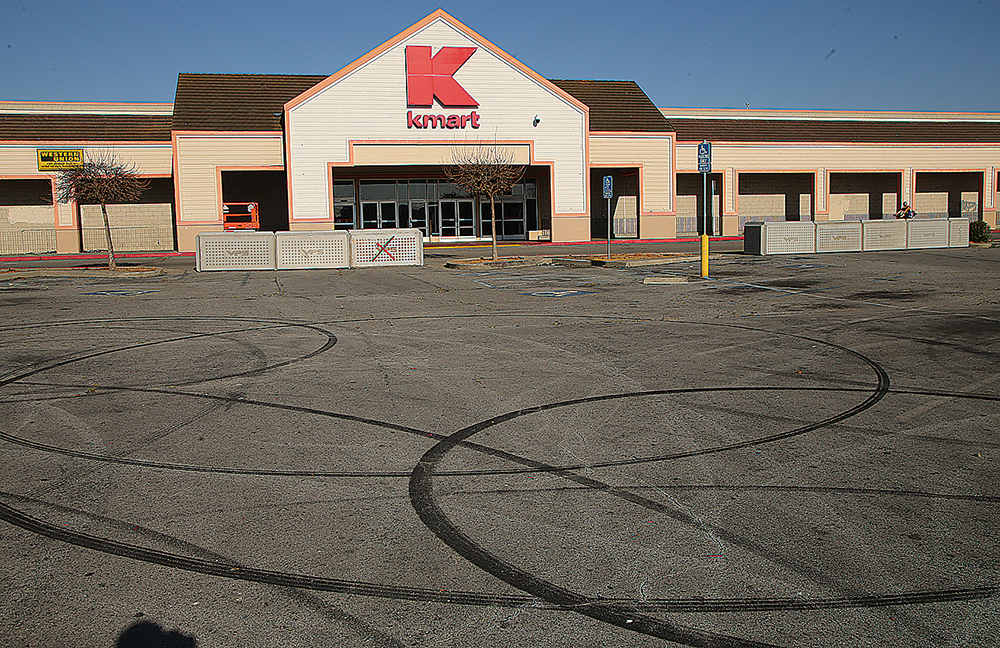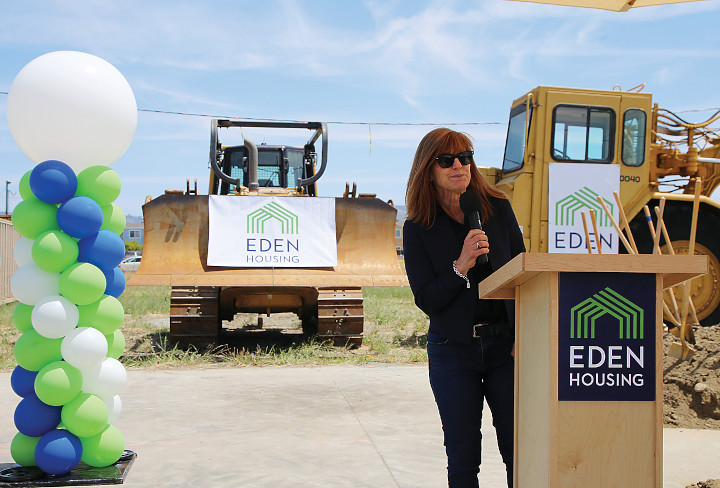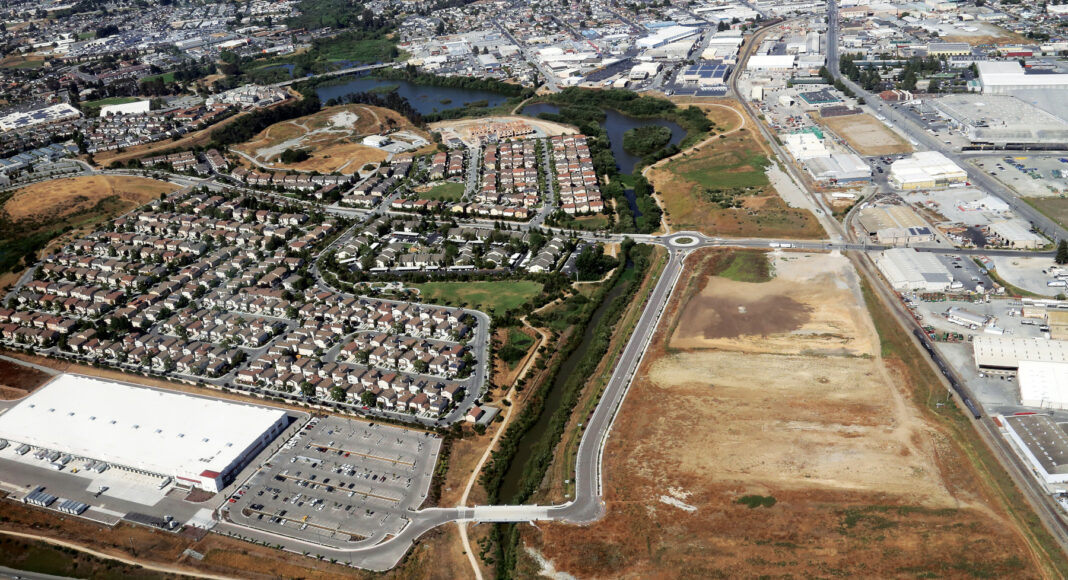If there is one thing that proponents of the competing ballot measures before Watsonville voters in the Nov. 8 election can agree on, it’s that we should have never gotten here.
If you ask city leaders, Measure Q proponents—known as the Committee for Planned Growth and Farmland Protection (CFPGAFP)—should have come to them to hammer out an agreement before they began gathering signatures to place the item on the ballot a year ago. And if you ask the committee, the city should have followed through on its word when the two sides—through lawyers—reached a compromise for a joint ballot measure earlier this year.
Unsurprisingly, neither side has been willing to admit to its share of the blame, and the roughly 53,000 Watsonville residents caught in the middle of the skirmish over the preservation of the Pajaro Valley’s iconic farmland are now tasked with making a monumental decision about their community’s long-term future.
Measure Q, the result of the committee’s signature-gathering process, proposes an 18-year extension of a so-called Urban Limit Line (ULL) approved by voters via Measure U in 2002. That ULL protected the majority of the agricultural land surrounding Watsonville from urban development by establishing a modest 25-year outward growth plan for housing and economic drivers. But some of the protections laid out in Measure U are set to expire this year and the rest sunset in 2027.
Measure S, placed on the ballot by a divided Watsonville City Council in response to Measure Q, also proposes an 18-year extension of the ULL, but would allow the council to make adjustments to the boundary during its upcoming general plan update—a massive, multi-month undertaking in which the community will determine what Watsonville should strive to be by 2050.
Put plainly, Measure Q would preserve all of the Pajaro Valley’s farmland through 2040, regardless of the possible impact those restrictions have had—and might have in the future—on the people in Watsonville’s 6-square-mile footprint. On the other hand, Measure S would rekindle the conversation that produced Measure U two decades ago: Can Watsonville address its housing and economic woes without sacrificing even a sliver of the fertile soil that, in many respects, is the reason why the city exists in the first place?
S-Town
There is perhaps no other person more responsible for getting Measure S on the ballot than Watsonville City Councilman Eduardo Montesino. After all, it was Montesino who stopped his fellow council member Vanessa Quiroz-Carter from casting the deciding vote to approve the settlement between the city and the committee that would have altered the latter’s ballot measure to open up the historic 13.6-acre Redman-Hirahara property on the west side of Highway 1 for commercial development.
Now Montesino says that with Measure S, Watsonville residents have a chance to determine the direction of their city.
“It’s a rare opportunity for our residents,” he says.
As we sit across from one another at a picnic table in the Beer Mule patio on a sunny late-September evening, small private airplanes buzz in and out of the neighboring Watsonville Municipal Airport as around four dozen people scattered throughout the taproom’s outdoor seating try to get over hump day with a cold brew. The location, he says, serves as a perfect example of two things: his insistence that small wealthy groups quietly but firmly rule over the direction of the city, and that the notion outsiders might have about Watsonville—that it’s a poor, predominantly Latinx city where businesses can’t succeed because residents have no money to spend—is inaccurate.
He says he sees many parallels between the CFPGAFP and the Watsonville Pilots Association (WPA), whose members—many of them wealthy out-of-towners—have for years battled with the city in court to halt projects around the airport. But the key similarity, Montesino says, is that the committee puts the sustainability of the agricultural land around Watsonville’s perimeter over the people that live within the city’s boundaries, in the same way that the WPA puts the viability of the airport over the success of the people that live around the facility.
“Special interests have more of a say about the direction of our city, about how we can address our issues, than the people who live here,” he says. “That’s not right.”
But proponents of Measure Q question whether something so integral to a region as agriculture is to the Pajaro Valley can be considered a “special interest.”
According to the Santa Cruz County Agricultural Commissioner’s 2021 crop report, the total gross production value of the county’s agricultural commodities last year was $657.3 million. That figure does not account for the industry’s total contribution to Pajaro Valley’s economy. For instance, during peak picking season some local hotels are fully rented out via master lease agreements with the area’s large growers, and restaurants also report increased foot traffic during the influx of seasonal workers. Other industries such as trucking, equipment rentals, packaging, cold storage and transportation are all buoyed by ag.

And the industry’s influence on the city goes beyond its economic benefits. For many residents, agriculture is the reason why they came to this valley, and why they were able to give their families an opportunity to become successful. It’s that against-all-odds mentality of overcoming the brutal working conditions in the fields that Watsonville residents take pride in, and identify with.
“This is the character of Watsonville,” says CFPGAFP member Sam Earnshaw, who adds that while gathering signatures for Measure Q people were emphatic that they did not want to see the Pajaro Valley turn into San Jose. “I know that sounds trite, but it’s true. It’s happened all over California … To brand us as ‘special interests,’ that’s not fair and it’s not right. That’s not what we’re in it for. We know the value of this community. We know the value of our farmland. We’re fighting to save our farmland.”
But for all the good that the agriculture industry brings to Watsonville, there are many issues that it has saddled the city with, too. Chief among them is the increased demand on services and affordable housing options as a result of the low wages and seasonal structure of farm labor. And although the industry is a cash cow for the county, the cash-strapped municipality receives very little revenue from agriculture businesses.
Tax Hike R Us
This conundrum is one of the biggest reasons why Watsonville is asking its residents to approve a second sales tax hike in three years this November. Measure R would raise the sales tax in Watsonville to 9.75%, the highest rate in Santa Cruz County, to bring in an estimated $5.1 million to fund infrastructure projects and parks, library and recreation programs—initiatives that the city says it can’t afford to cover with annual general fund revenues in the $48 million range.
So it is odd, Montesino says, that the committee—and some of its largest donors, such as the Santa Cruz County Land Trust, which has given thousands to the committee’s leading measures Q and R—are fine with pushing a tax on Watsonville residents, but laced their argument against Measure S with statements about their financial status that Montesino finds problematic. Perhaps the most troublesome, he says, is the committee’s assertion that Watsonville doesn’t need single-family homes “that nobody in our community can afford.”
While Montesino admits that the median annual income in Watsonville is nearly $30,000 lower than the county figure of $89,986, he says that residents here do have money to spend. He points to the fact that when people were forced to make the bulk of their purchases on the web and shop locally during the pandemic shutdowns, the municipality’s sales tax revenues stayed strong.
“We’ve got to get off our mentality that we are a poor community, because we are not,” says Montesino.
New Beginnings
As we hop out of Earnshaw’s electric mini-SUV to start walking toward the back of the vacant Kmart building on Freedom Boulevard, Earnshaw tosses a quip my way: “You’re getting your exercise today, Tony.”
We’re at the sixth stop of a 20-site, two-hour tour of vacant lots and commercial buildings, and under-construction and completed infill housing projects scattered around Watsonville. Earnshaw walks ahead a few paces with Yesenia Jimenez, a restoration specialist and educator with Watsonville Wetlands Watch, as Bob Culbertson and I follow behind them.
“When I grew up, you would go downtown to shop,” says Culbertson, a board member of Watsonville Wetlands Watch. “And then, somebody came up with the idea of a mall.”

For around a decade, this shopping center was the closest thing that Watsonville had to a mall, and for a time it ruled over the area as a commercial juggernaut. But, now, this once-promising shopping hub looks desolate, outdated and forgotten, cast aside by shoppers who now crowd into the Target across town for their everyday goods.
As we reach the back of the building, Culbertson finishes up his short but precise soliloquy about the life, death and rebirth of failed shopping centers across the country. Sure, the pandemic might have served as the death blow for some big box stores, but the Kmarts and Sears of the world were already struggling before life was forced to stop as Covid-19 began to spread. Now, many cities, including Watsonville, that were merrily chugging down the road of suburbanization are staring at massive hollowed storefronts and parking lots, all while they struggle to find new land to meet their ever-increasing demand for housing.
If there were ever a perfect example of the committee’s claim that Watsonville can address its state-mandated housing goals within city limits, this vacant 94,000-square-foot building is it. Their vision for the property is simple: tear down the tattered building and build a multi-story, mixed-use complex with apartments and shops.
It’s a concept that might seem foreign to Watsonville residents, but one that state lawmakers are beginning to champion as a way to address the housing crisis while limiting urban sprawl. In fact, just a few weeks ago Gov. Gavin Newsom signed two new bills—Senate Bill 6 and Assembly Bill 2011—into law, allowing developers to undercut local zoning rules to more easily build housing on lots zoned for commercial uses. One analysis found that AB2011 alone could produce up to 2.4 million housing units statewide.
“There is still a lot of opportunity (for housing development) throughout Watsonville,” Culbertson says as we hop back into Earnshaw’s car to continue our cross-city tour.
Our other stops related to housing include a handful of vacant lots, four infill housing projects in various stages of development and a couple of completed collections of condos. These are just a dozen locations out of 201 that they point out are identified in Watsonville’s Housing Element, a state-mandated document used by cities to set housing goals, as vacant or underutilized and primed for development. At every stop, we talk over various aspects of the local housing market and why they so strongly believe Measure Q is the right route for Watsonville.
For both Earnshaw and Culbertson, who grew up in other communities and saw annexation rob those cities and towns of their natural land, Measure Q is a way for them to continue to fight the urbanization happening across the state that has had deleterious impacts on the environment. But for Jimenez, Measure Q goes beyond protecting farmland. The lifelong Watsonville resident knows first-hand just how brutal securing housing is becoming in Watsonville. Her family had rented a home for 27 years before the landlord hiked the rent, forcing them to look for another place. And trying to jump into a housing market in which the median home listing price is around $830,000 is a sobering experience.
She doesn’t see how opening up farmland for new single-family homes will make homeownership more attainable for Watsonville residents, and instead sees affordable housing complexes as the right route to address the city’s housing needs and halt gentrification.
“For me, [Measure Q] is about the people as much as it’s about the environment,” she says.
But Montesino says that Watsonville shouldn’t—and can’t afford to—pick one over the other. He points out that the city is already laying the groundwork to align with the state’s model of infill development by designing the Downtown Watsonville Specific Plan, a document which, in its current state, could open up the corridor to the addition of around 4,000 housing units over the next 25 years. And he also highlights the city council’s recent overwhelming support for three affordable housing developments that are set to be completed sometime next year and will bring 205 affordable units to Watsonville.
“They say we need to focus on infill. We’re already doing that … That helps get people housed, but it doesn’t give our residents a chance to buy a home and build generational wealth,” Montesino says, adding that it has been nearly two decades since the last for-sale housing project was completed in Watsonville. “That’s an issue. How can we provide a path for our residents to buy a home if they’re not being constructed?”
And, he says, Measure Q proponents are misrepresenting the figures included in the housing element. While there are 201 vacant or underutilized parcels listed in the document, city staff’s recent analysis of those lots found that only 40 would not face significant challenges—such as airport safety zones, existing entitlements and proximity to wetlands—that prohibit residential development. And only 10 are currently ready to be redeveloped into housing without a zoning change or additional analysis. Those 40 parcels, according to the city, would produce just 281 housing units, nowhere near enough to meet Watsonville’s mounting state-mandated housing goals—it has to accommodate 2,053 units by 2031 alone.
“It’s not as simple as saying, ‘There’s that vacant lot. Go build something on it,’” Montesino says.
As one of two millennials on the city council, Francisco “Paco” Estrada has had many of his peers leave the area because they cannot afford to buy a home—even he had to get help from his parents for the down payment on his house. And while Measure U’s restrictions are not the sole reason why Watsonville’s housing market is in the state it is, he says it’s important to remember that if the growth plan included in the measure was fully implemented, there would be 2,000 homes constructed in the Buena Vista area in the northern reaches of the city.
“Measure U has been successful in some aspects, but, in others, it’s been a failure,” says Estrada, who joined Montesino and me midway through our conversation at Beer Mule. “There are some broken promises that we have to discuss.”

Broken Promises
As we stare out into a desolate dirt lot on the outskirts of Watsonville, Culbertson lets out a grunt-like sigh.
“These could’ve been better job creators,” Earnshaw says from his driver’s seat.
“That’s what they promised when we took the farmland out of production,” adds Culbertson, who is seated in back with me to my right. “They said we were going to bring in businesses and bring jobs.”
We’re pulled over near a roundabout on Ohlone Parkway that serves as the entrance of a FedEx distribution center at the Manabe-Ow business park. It was here that the community, while hammering out Measure U 20 years ago, agreed to part ways with 53 acres of valuable agricultural land to make way for some 2,100 light-industrial jobs.
To date, FedEx is the lone employer that has set up shop, bringing around 200 jobs to the area. And it wasn’t until last year that plans were submitted to the city to construct two more distribution centers on the remaining parcels. Watsonville Community Development Department Director Suzi Merriam says those properties could bring around another 135 jobs.
To say that this aspect of the plan failed to meet expectations would be a massive understatement. But this result should not be surprising, Culbertson says. One of the big reasons why Watsonville wanted to annex around 800 acres of land back in the late 1990s—a push that sparked the creation of Measure U—was the mass exodus of light-industrial jobs in the food processing industry as a result of the North American Free Trade Agreement.
And the departure of industrial jobs and the middle-class wages they provided has only worsened since then, both nationwide and locally—large employers such as Fox Racing Shox and West Marine, for example, both recently moved their operations out of South County. So Measure Q proponents aren’t buying claims that annexation, which will likely axe some agricultural jobs, will lead to the creation of much-needed, higher-paying jobs for South County residents.
It’s unclear what jobs Montesino or Estrada envision annexation, in a perfect world, would produce. But what is clear, Montesino says, is that the agriculture industry is slowly changing—he cites Driscoll’s fast-growing operations in Mexico, its recent investment into vertical farming and the continuous push to automation—and the city should be able to pivot along with it to provide higher-paying employment opportunities, especially for young professionals looking to move back into the community they grew up in.
Estrada says that Watsonville’s failure to bring higher-paying jobs and give younger generations a reason to stay in their community—or return after they receive their college degree—is holding the city back.
“It’s not a good thing for the young people of a community to leave,” Estrada says. “You lose creativity. You lose talent. You lose innovation. You’re losing the next generation. And that’ll mean that Watsonville will grow more rigid, more conservative, it’s just not going to evolve. If we can do everything we can to keep as much of our local talent here, the better the community will be.”












